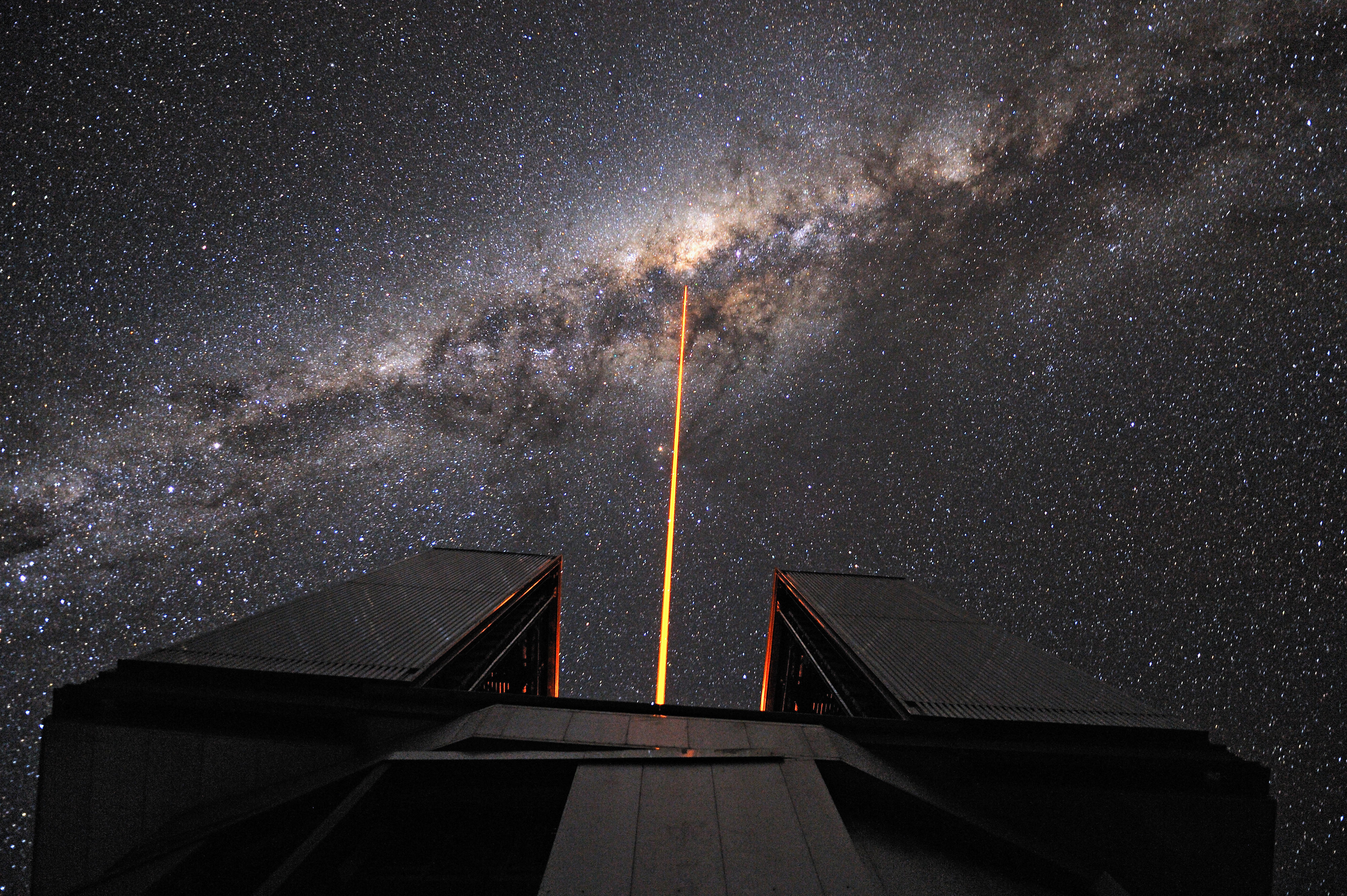News release
From:
Astronomy: Binary star system found near the Milky Way’s supermassive black hole *IMAGES & VIDEOS
The detection of a binary star system close to the supermassive black hole in the center of the Milky Way is reported in a Nature Communications paper. Such systems have been predicted but have previously eluded detection. The findings provide new insights about the dynamics and evolution of stars in the vicinity of our Galaxy’s supermassive black hole, Sagittarius A*.
Sagittarius A* is orbited by high-velocity stars and dusty objects, which are known collectively as the S-cluster. Binary star systems (two stars gravitationally bound to one another around a common center of gravity) have been predicted to exist within the S-cluster, however they have not previously been detected. Previous research has suggested that such stars are unlikely to be stable due to the interactions between the stars and Sagittarius A*.
Florian Peißker and colleagues used archival data acquired from the Very Large Telescope and Keck telescope to detect a binary system within the S-cluster for the first time. The system, called D9 — consisting of the binary star components D9a and D9b — is relatively young, with a predicted age of approximately 2.7 million years, having likely formed outside the S-cluster. Further analysis suggests that this system is reaching the end of its stable window within the S-cluster and that the two parts of the binary system could merge in the relatively near future, due to the influence of the black hole. The detection of D9 suggests that these binary systems are capable of residing within the S-cluster for approximately 1 million years, following migration from outside the S-cluster. These findings provide new insights into one potential evolutionary path of stars in the orbit of Sagittarius A*.
Multimedia








 International
International


